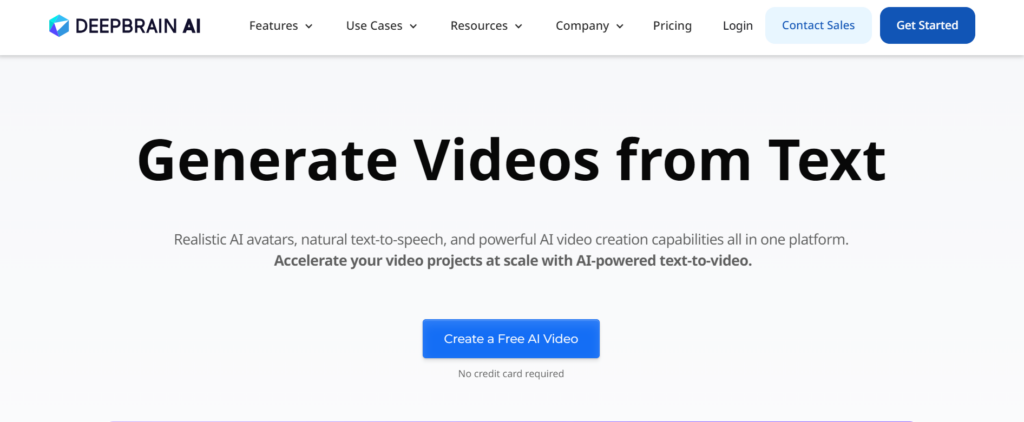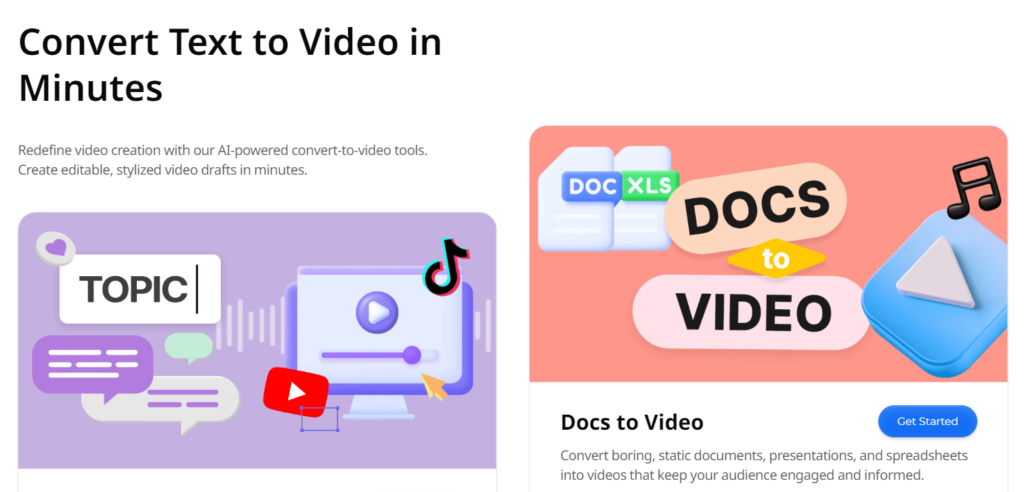In today’s fast-paced world, where technology is rapidly advancing, the concept of artificial intelligence (AI) has gained significant popularity. AI has become an integral part of our lives, with its applications ranging from virtual assistants to self-driving cars. However, one area that has seen a recent surge in the use of AI is video content creation.
Videos have become a highly effective way of conveying information, connecting with audiences, and promoting products. According to a report by Cisco, videos will represent 82% of all online traffic by 2022. This statistic speaks volumes about the growing demand for video content and the need for efficient and accessible video creation tools.

DeepBrain AI is one such tool that promises to revolutionize the video creation process using artificial intelligence. In this article, we will explore what DeepBrain AI is, how it works, my personal experience with the platform, and its pros and cons. We will also discuss who should use DeepBrain AI and some viable alternatives. So let’s dive into the world of DeepBrain AI and discover if it is the best AI avatar generator in 2024.
How Does DeepBrain AI Work? (My Experience)
As someone who has always been intimidated by the idea of creating videos, I was intrigued when I heard about DeepBrain AI. The thought of being able to create lifelike human avatars without any prior filming or acting experience was tempting. So I decided to test out the platform and see if it lived up to the hype.
After signing up for DeepBrain AI, I was greeted with a sleek and user-friendly interface. The platform offers four main methods for generating videos – Create AI Video with ChatGPT, Convert URL to AI Video, Powerpoint to Video, and starting with a template. I decided to try out each method to get a comprehensive understanding of the platform’s capabilities.

1. Create AI Video with ChatGPT
The first method I tried was creating an AI video using ChatGPT. This feature uses the power of natural language processing (NLP) to generate human-like conversations between two avatars. The process was simple – I typed in a conversation between two characters, selected the avatars’ appearance and voice, and clicked on “Generate Video.”
To my surprise, the video was generated within minutes, and the conversation between the two avatars looked realistic. However, due to the nature of NLP technology, some of the responses were not entirely coherent, which is expected. Nevertheless, this feature is an excellent way to create engaging and conversational videos without any filming or acting involved.
2. Convert URL to AI Video
The second method I tried was converting a URL into an AI video. This feature allows you to convert any website URL into a video by simply pasting the link and selecting the desired avatar and voice. The video’s quality was impressive, and it can be useful for creating product demonstrations, tutorials, or showcasing web content in a more engaging format.
However, one limitation I noticed is that the platform only supports converting URLs from certain websites, such as YouTube, Vimeo, and Dailymotion. This may restrict users who want to convert content from other sources.

3. Powerpoint to Video
The third method I tested was converting a PowerPoint presentation into a video. This feature is particularly beneficial for businesses or educators looking to transform their slideshows into engaging videos. I uploaded a PowerPoint presentation, selected an avatar, and added some background music before generating the video.
The result was a professional-looking video that closely resembled my original presentation. However, the platform does not support animations or transitions from the PowerPoint, and the AVI format of the video may limit its usage on some devices.
4. Start with a Template
The last method I tried was starting with a template. This feature offers a variety of pre-made video templates that users can customize according to their needs. The templates cover a wide range of topics, from marketing to education to entertainment.
I selected a template for a product demonstration and added my desired details, such as product images and descriptions. The video was generated in under five minutes and looked impressive. However, there are limited customization options available for the templates, so users looking for more creative control may be disappointed.

Pros and Cons
After testing out all four methods, here are the main pros and cons I found about DeepBrain AI:
Pros:
- Easy to use, user-friendly interface
- Saves time and effort by eliminating the need for filming and acting
- Offers a variety of customization options for avatars, including appearance, clothing, and voice
- Supports multiple languages, making it accessible to a wider audience
- Cost-effective compared to hiring actors, equipment, and video production teams
- Provides high-quality videos and avatars that closely resemble real humans
Cons:
- Response coherence may be an issue with the ChatGPT feature
- Limitations on converting URLs from certain websites
- Lack of animation support for PowerPoint presentations
- Limited customization options for templates
Who Should Use DeepBrain AI?
DeepBrain AI is a versatile platform that can serve various purposes for different individuals and businesses. Here are some use cases where DeepBrain AI can be beneficial:
- Content creators: DeepBrain AI can help content creators, such as YouTubers, bloggers, and influencers, create engaging and conversational videos without any filming or acting experience.
- Small businesses: Small businesses can use DeepBrain AI to create professional-looking marketing videos, product demonstrations, or tutorials without investing in expensive equipment and hiring actors.
- Educators: Teachers and educators can utilize DeepBrain AI’s features to create educational videos and presentations with lifelike avatars, making online learning more engaging and interactive.
- Social media marketers: DeepBrain AI’s templates and customization options make it an excellent tool for creating social media content that stands out and grabs the audience’s attention.

Conclusion
DeepBrain AI is a game-changer in the world of video creation. Its user-friendly interface, high-quality avatars, and various customization options make it a valuable tool for individuals and businesses alike. However, like any other technology, it has its limitations, such as response coherence in the ChatGPT feature and limited customization options for templates.
My top three alternatives for DeepBrain AI are:
- Synthesia – A video creation platform that uses AI to generate realistic human avatars and lip-sync them to any text input.
- Lumen5 – A video creation tool that turns text into engaging videos using AI and pre-made templates.
- Reallusion – A 3D animation software that allows users to create lifelike animations without any prior experience.
In conclusion, if you’re looking for a cost-effective, efficient, and accessible way to create engaging videos, DeepBrain AI is definitely worth trying out. With its continuous advancements in AI technology, it may become the go-to platform for video content creation in the future.